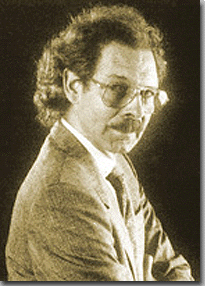 | ||||||
Mark King
Biography & Gallery
Original Fine Art and/or Custom Commissions
are Available by Many of Our Fine Artists

This page was last updated on: November 22, 2024
Copyright, Arts-Galleria.com, 2000.


Mark King has carefully studied the old and modern masters from Cimabue and Masaccio to Goya, Turner, Degas and Bonnard.
Fascinated with painting techniques, the chemical composition of colors and how they interact, King admits, “What I am searching for is not so much making a statement, or coming up with something new or different, but having more virtuoso command of my medium.”

Mark King, a champion of Impressionism and the Ecole de Paris, was born in Bombay in 1931 of British parents. He is the product of an exotic and privileged upbringing in India, where he lived until the age of sixteen during the tumultuous last days of the British Raj. In 1948, following graduation from La Martiniere College in Calcutta, where his focus had been on botany as well as art, King sailed to England to attend Bournemouth College of Art, having determined to pursue painting, sculpture, architecture and theatre design. He subsequently spent the next ten years as resident scenic designer at the Oxford Playhouse Theatre, the Bristol Old Vic Theatre and the Scottish National Opera. In 1961 King decided to concentrate on painting and moved to Paris to study at the Ecole des Beaux-Arts and the Louvre.
Preparing the foundation consumes most of his time, for King meticulously layers colors, glazes and shapes as substrata for the five or ten percent of the acrylic paint that floats on top and forms the finished composition. The underpainting filters through to the surface creating depth and texture. Because of his alla prima approach, in which a painting is realized in a burst of inspiration and single application of pigments, King confesses, “It is not until the last ten to fifteen minutes before completion that I am able to see where the painting is going and catch the mood of the moment.”
King follows in the footsteps of Courbet and the Impressionists, painting what he sees, such as the familiar streets, monuments and quarters of Paris. King never fully defines his seductive faces and figures, which he often shows from behind, as if they too were silent observers like himself. Passionate about horses since his youth, King's animated depictions of polo and the fox hunt derive from personal experience. His interest in big game dates from India, where elephants and camels roam the streets and tigers and other large cats can easily be seen in their natural habitat. In addition to King's fascination with the fauna of Central Asia, he has also retained a keen fascination for the flora of the region as well as botany in general, which he incorporates into his compositions. Since his arrival in the United States, as King became more exposed to sports, he capitalized on the drama and visual spectacle of ice hockey and horse racing, as well as his love of the out-of-doors by treating subjects like yacht racing, golf and tennis from a seascape or landscape point of view.
Like the Impressionist Masters, Mark King uses his eye as a passive organ, confronting the visual field. Objective and detached, he considers himself an "unobserved observer." He explains, "I make no judgments about what I see -- there is no right or wrong -- it is there to be assimilated." King believes, "When there is no jamming of the cosmic forces influencing our receptivity, those energies and forces feed into us and it is those briefest fractions of a second when things flow."
King's versatility and zest for life transform everything he paints into strong patterns of brilliant color. His subtle understanding of how color, texture and paint interact is his strong point. Color conveys feelings and emotions in the creation of a timeless art, and now in the full maturity of his career, he has achieved superb mastery of his palette.
Mark King
Tennis Players
LE Serigraph
67/325
1977
25" x 35"
Framed:
32" x 42"
$ 2,600.00




